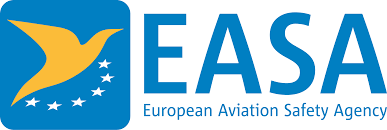Leeham News and Analysis
There's more to real news than a news release.
EASA: SAF production must increase dramatically to meet climate goals
Subscription Required
By BRYAN CORLISS
Oct. 3, 2022, © Leeham News: Aviation is “a key vulnerable economic sector that is only in the early stage of adaptation to climate change,” according to a new report from EASA, the European Union’s Aviation Safety Agency.
To meet the industry’s environmental challenges – and there are several — more must be done to identify the hazards and risks that extreme weather events caused by climate change can bring to the industry, the report says.
The report also recommends that more needs to be done to plan for the impact of extreme weather on aircraft and airline infrastructure. The industry and regulators also need to “identify and apply ‘win-win’ solutions” to reduce carbon dioxide and other emissions from airliners, and to accelerate the deployment of aircraft and air traffic control technology to improve the efficiency of Europe’s airline fleet.
The good news in the report is that researchers believe aviation could cut emissions by 69% by 2050 by adopting a suite of changes, including increased use of sustainable aviation fuel (SAF), improved aircraft technology, better operational practices and by using hydrogen or electric motors to power aircraft where feasible.
Summary
- Production of Sustainable Aviation Fuel must increase dramatically.
- Airline emissions are going up as a percentage of contribution to climate impact.
- In another blow to Boom’s claim its SST will be environmentally friendly, EASA takes a different view about SSTs.
Pontifications: No engines, billions shy, devastating enviro analysis, Boom’s CEO still exudes optimism
Sept. 20, 2022, © Leeham News: Blake Scholl, the founder and CEO of Boom, the start-up company, continued to paint an optimistic picture about the Overture Supersonic Transport.
He told the US Chamber of Commerce Aerospace Summit last week that the Overture, a Mach 1.7 88-passenger aircraft concept, will revolutionize international air travel.
But Boom has big challenges ahead—not the least of which is that there is no engine manufacturer so far that has stepped up to provide an engine. The Big Three—GE Aviation, Pratt & Whitney, and Rolls-Royce—have either outright rejected participation or other priorities exist.
Plethora of Challenges
- Rolls says publicly it won’t pursue an engine for Boom. GE told LNA it’s not interested in developing an engine for Boom. P&W is focused on advances for its GTF, developing sustainable technology and military engines.
- The International Civil Aviation Organization (ICAO) in July issued a report on the environment that eviscerated SSTs and the SAF concept outlined for Boom. The report included analysis from the International Council on Clean Transportation (ICCT).
- Scholl claims a market demand for thousands of SSTs but Boom’s 2013 study by Boyd International forecast a market demand over the life of the program of 1,318 Overtures. Some thought this figure was generous.
- Boyd’s report also concludes Boom needs a Mach 2.2 airplane to be commercially viable. Scholl reduced the speed to 1.7. This means that in some cases, airline crews can’t do a round trip from the US to Europe without a relief crew, which upsets some of the economics.
- If Boom were a publicly traded company, all the orders would fall under the ASC 606 accounting rule that questions the viability of those orders.
- Scholl told AIN Online Boom needs $6bn to $8bn to come to market and so far, it has raised $600m.
- And we don’t get into the certification and regulatory hurdles. Among them: In his presentation to the Chamber, Scholl said there are 600 potential SST markets. He included some inland in the US, where there is a ban on SSTs flying over land.


